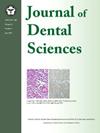推进骨结合研究:牙科植入物的动态三维(3D)体外培养模型
IF 3.4
3区 医学
Q1 DENTISTRY, ORAL SURGERY & MEDICINE
引用次数: 0
摘要
本文章由计算机程序翻译,如有差异,请以英文原文为准。
Advancing osseointegration research: A dynamic three-dimensional (3D) in vitro culture model for dental implants
Background/purpose
In-vitro studies are essential for understanding cellular responses, but traditional culture systems often neglect the three-dimensional (3D) structure of real implants, leading to limitations in cellular recruitment and behavior largely governed by gravity. The objective of this study was to pioneer a novel 3D dynamic osteoblastic culture system for assessing the biological capabilities of dental implants in a more clinically and physiologically relevant manner.
Materials and methods
Rat bone marrow-derived osteoblasts were cultured in a 24-well dish with a vertically positioned dental implant. Controlled rotation using a 3D rotator with 3° tilts was applied. Cell attachment, proliferation, and differentiation on implant surfaces were evaluated in response to different surface topographies, physicochemical properties, and local environments.
Results
Among the tested rotational speeds (0, 10, 30, 50 rpm), optimal osteoblast attachment and proliferation were observed at 30 rpm. A linear correlation was found between cell attachment and rotation speed up to 30 rpm, declining at 50 rpm. Alkaline phosphatase (ALP) activity and mineralized matrix formation were elevated on newly acid-etched, hydrophilic surfaces compared to their 4-week-old hydrophobic surfaces. Sandblasted implants showed higher ALP activity and matrix mineralization. Adding N-acetyl cysteine to the culture medium increased ALP activity and mineralization.
Conclusion
Osteoblasts successfully attached, proliferated, and mineralized on dental implants in vitro under optimized dynamic conditions. This system differentiated the biological capabilities of implants with varying surface topographies, wettability, and biochemically modulated environments. These findings support developing a 3D dynamic dental implant culture model, advancing osseointegration research and innovating dental implant designs.
求助全文
通过发布文献求助,成功后即可免费获取论文全文。
去求助
来源期刊

Journal of Dental Sciences
医学-牙科与口腔外科
CiteScore
5.10
自引率
14.30%
发文量
348
审稿时长
6 days
期刊介绍:
he Journal of Dental Sciences (JDS), published quarterly, is the official and open access publication of the Association for Dental Sciences of the Republic of China (ADS-ROC). The precedent journal of the JDS is the Chinese Dental Journal (CDJ) which had already been covered by MEDLINE in 1988. As the CDJ continued to prove its importance in the region, the ADS-ROC decided to move to the international community by publishing an English journal. Hence, the birth of the JDS in 2006. The JDS is indexed in the SCI Expanded since 2008. It is also indexed in Scopus, and EMCare, ScienceDirect, SIIC Data Bases.
The topics covered by the JDS include all fields of basic and clinical dentistry. Some manuscripts focusing on the study of certain endemic diseases such as dental caries and periodontal diseases in particular regions of any country as well as oral pre-cancers, oral cancers, and oral submucous fibrosis related to betel nut chewing habit are also considered for publication. Besides, the JDS also publishes articles about the efficacy of a new treatment modality on oral verrucous hyperplasia or early oral squamous cell carcinoma.
 求助内容:
求助内容: 应助结果提醒方式:
应助结果提醒方式:


